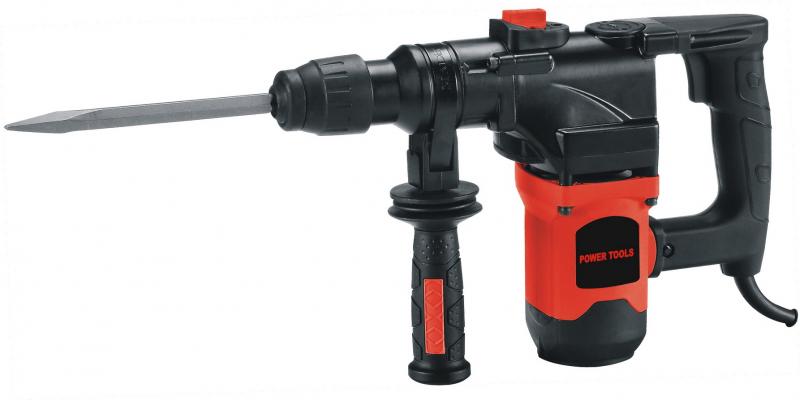The Rise of Power Tools in India: Construction Boom, DIY Culture, Organized Retail, Changing Perceptions, and Growth Prospects for the Next Decade
The Rise of Power Tools in India
The power tool industry in India has seen tremendous growth in the past decade as more and more Indians are adopting power tools for both domestic and professional use. From drills and saws to sanders and grinders, power tools have made several tasks much easier and more convenient for consumers and businesses alike. Let's take a deeper look at some key trends driving the growth of power tools in India.
Growth of the Construction Industry
One of the major factors fueling demand for power tools in India is the booming construction industry. With rapid urbanization and increasing infrastructure projects, the size of the construction market has grown exponentially in recent years. Various government initiatives like 'Housing for All by 2022' and investments in roads, railways, airports etc. have created a huge demand for construction equipment and tools.
Power tools offer significant advantages over manual tools for tasks like drilling, cutting, sanding etc. enabling faster and more accurate work. As a result, their adoption among construction contractors, real estate developers and individual homeowners has increased substantially. Drills, circular saws, grinders, angles grinders and belt sanders are some of the most popular power tools used extensively on construction sites across the country.
Rise of DIY Culture
Another driving factor has been the emergence of do-it-yourself (DIY) culture among urban Indians. With greater exposure through online videos and tutorials, more homeowners are tackling small repairs and projects around the house themselves instead of relying on professionals. Power tools enable novice users to complete tasks confidently and make DIY jobs much less tedious.
Cordless drill kits and driver kits have become top sellers as they allow users to hang wall shelves, pictures, curtains and much more with ease. Other common DIY power tools include jigsaws, angle grinders, circular saws etc. Even for small tasks like assembling furniture, fixing creaky hinges or outlet covers, cordless drills have turned out to very handy replacements for manual screwdrivers.
Rise of Organized Retail
The organized retail boom in India has played a catalytic role in popularizing power tools across smaller cities and towns. Popular hardware stores, lighting shops and multipurpose outlets are now prominently displaying a wide range of Indian and global power tool brands. Several multi-brand exclusive power tool showrooms have also come up in metro areas.
Customers can inspect, test and compare different models up close before buying. Seasonal mega sales and promotions, easy EMI options, demo workshops have further increased accessibility. The widespread availability through organized retailers has allowed consumers beyond just big cities to realize the utility of cordless tools in simplifying everyday maintenance tasks at home. Brand showcasing at this scale would not have been possible through traditional dealer networks alone.
Changing Perceptions
Another important factor contributing to the power tools growth story has been the changing perception around their usage. While they were earlier seen as tools strictly for commercial use, Indians are now more open to the idea of using power tools even for small jobs. The initial inhibitions around safety, affordability, repair-maintenance are slowly fading away.
Cordless models specifically have helped shift perceptions as their compact size and weightless design don't evoke the same intimidation as bulky corded tools. Strong marketing campaigns by top players highlighting the ease of use for DIYers have boosted consumer confidence. Affordable entry-level models catering to casual requirements have further helped popularize them as handy appliances for households.
Rise of Regional Players
Indian manufacturers have played a considerable role in boosting access across smaller cities. Homegrown brands like Stanley Black & Decker India, Bosch India, Makita, Hitachi Power Tools and Milan have led the charge in developing a wide catalog of products tailored for local needs. Their competitive pricing and widespread distribution network to tier 2/3 areas have brought quality power tools within easy reach.
Regional brands like BHEL, Airtex, HF India etc. as well as several smaller unorganized players have further complemented this supply chain penetration. Even e-commerce has enabled remote areas to avail power tools formerly unavailable but now delivered right to the doorstep. The solid presence of Indian manufacturers complementing global leaders is vital for meeting the diverse demands of such a large population base.
Growth Prospects
With a thriving construction industry, rising disposable incomes, proliferation of organized retail and shifting mindsets, the power tools market in India has tremendous potential for further expansion in the coming years. Reports project the Indian power tools market size to grow at 12-15% annually to reach upwards of $2 billion by 2025 from just $500 million in 2015 on the back of surging demand across end-use sectors.
As power tools become even more accessible via omni-channel retail and affordable financing options, their adoption rate for both professional and personal usage is likely to keep rising steadily. The consequent requirement for regular servicing, accessories, parts etc will further fuel after-sales revenues for major brands penetrating deeper geographic expanses in India's growth trajectory. Continued government investments to modernize infrastructure and push manufacturing will remain a tailwind. Overall, power tools are poised to revolutionize construction methods, maintenance capabilities and hobby/DIY interests across India in the next decade.
Get more insights on this topic :
